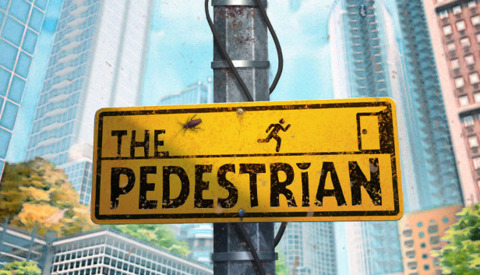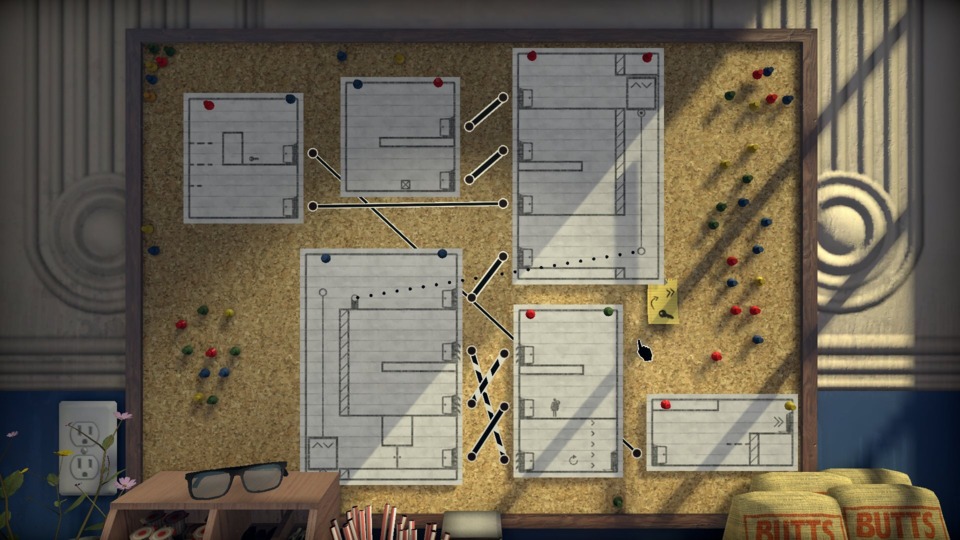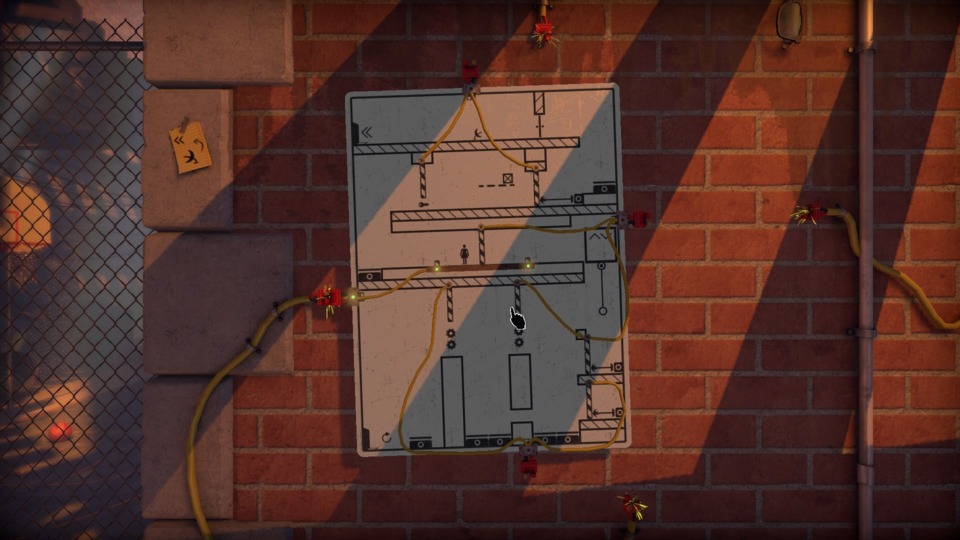Indie Game of the Week 286: The Pedestrian
By Mento 0 Comments

Indie games have come to mean so many things to so many people. For some, they're tiny-sized, tiny-budget games that you play between the big ones as palate cleansers; for others, they're the vanguard of the industry's most imaginative thinkers, relegated to working in a smaller tier of development where risks and experiments are still allowed to occur; for others still, they're a veritable zombie apocalypse of all our favorite defunct genres brought back to life or, in the case of still-active genres like RPGs or platformers, vintage throwbacks to their halcyon days; however, for me the archetypal Indie experience will always be that upstart mix of emotional storytelling and intriguing mechanics belonging to the modest puzzle-platformer. When I play The Pedestrian from Skookum Arts, it also feels like I'm playing Braid, Limbo, Fez, Thomas Was Alone, The Swapper, or any number of games from this all-encompassing format I've covered in the past, and will no doubt cover again in the future. For the purposes of Indie Game of the Week, this is the equivalent of touching base with an old friend because it's been a while.
The Pedestrian has you play a dual role of a sign symbol - either a male or female shape - and an unseen manipulator helping said symbol reach a goal, whether that's simply reaching the next screen or collecting an item needed to complete an overarching puzzle elsewhere. The screens are all comprised of road signs: all in different shapes and colors, each filled with little platforming challenges and hazards. It's with that secondary role that the game starts to get mindfuck-y: the manipulator can take these individual signs and move them around into new positions, drawing connections between them in various arrangements to allow for different paths through the current level. There are, however, limitations to this pathfinding: if your character passes through one connection, it becomes "canon" in a manner of speaking; that is to say, if you then undo this connection once it has been solidified in this fashion, the level will completely reset including dropping the protagonist in their original position as well as any items they've found or used. Many puzzles then become a matter of figuring out how to connect paths in such a way that you won't then need to reverse it later along with your progress, or perhaps even find a way to exempt yourself from the reset process altogether. The game eases you into its challenges gradually, introducing you to the control scheme if not necessarily to the rules (those you have to intuit). The game's difficulty curve starts extremely easy and then sharply rises throughout its short duration, capping off with a couple of very meta final puzzles that make for the sort of end-game twist that's endemic to this cunning genre.

The game's first impressions are striking, in part because the playable sign areas exist adjacent to a world close to our own. While not quite photorealistic, the "real world" backgrounds juxtaposed against the stylized and flat signs make for a strong contrast and when the game starts factoring in real-world obstacles on top of the ones presented within the "sign world", it makes for some remarkably layered puzzles. The game's soundtrack helps to settle the tone it's going for: with something like this you could play up a sci-fi or magical realism angle, but the bright and bouncy instrumental music immediately brings to mind something like a Pixar movie, or perhaps the lighter and more high-concept short that usually precedes same: that your quest through all these signs across a city and its underground is one of scrappy excitement and discovery. It's also hard to stay frustrated when a soundtrack like that is in the background, even on your fifth or six reconfiguration of the current screen's many signs to find its elusive correct route, which may be another factor behind the sunnier direction it took.
I found the game pretty charming overall, though there's a few glaring issues. The first is that it's an incredibly short game that runs out of steam quick, jumping to its big finale after about three or four hours. To its credit, it doesn't stop throwing new ideas at you the whole time, and probably figured it would be best to bow out with one last surprise rather than toss in ever more challenging arrangements of the mechanics it has already presented. After all, Indie games have the good grace to conclude when they feel the moment is right, rather than extend themselves unnecessarily to uphold some specious back-of-the-box promise of value. However, that can also mean that I was left wanting more and in particular more ways the 2D signs interact with the 3D world they inhabit in a similar fashion to other examples of this format like Sideway: New York or The Legend of Zelda: A Link Between Worlds. I'm perhaps being unreasonable with this next point, but the game could've done with something akin to a back button or maybe a brief time-reverse feature: just something to fix an immediate mistake, like leaping into a fatal laser beam or sawblade, to prevent myself from having to recreate the last five-to-ten minutes of careful route planning. Most screens are these self-contained affairs that - separately - don't take that much time to solve, especially once you have the solution; there are still times where said solution is a multi-step process that can be hard to replicate on the fly without also having to start over mentally too. If I'm being honest though, half the occasions where I had to restart were because I missed an important stage much earlier in the process, and a short-duration time-reverse probably wouldn't have been sufficient to save my ass. It's always the nature of puzzle-platformers to get frustrated from repeated mistakes, much as it in adventure games when you're stymied by your lack of imagination (or an inability to find the obtuse logical wavelength the designers were working on, as the case may be).

This is all to say that the Pedestrian looks great, sounds great, has some creative ideas in a genre that one might believe had been thoroughly mined of any innovation long ago, and is perhaps just a little too short and occasionally a little too annoying with its longer puzzles. (Before anyone sounds off in the comments, making you play those parts over and over doesn't exactly fix the short duration problem.) If you're somehow not burned out on puzzle-platformers, or perhaps you weren't playing a whole lot of Indies when they ruled the roost in the early 2010s, it wouldn't be a bad recent choice for acquainting or reacquainting yourself with the questionable joys that can only come from staring at a screen layout for minutes in total confused panic.
Rating: 4 out of 5.
| < Back to 285: Inspector Waffles | The First 100 | The Second 100 | > Forward to 287: Epistory: Typing Chronicles |
